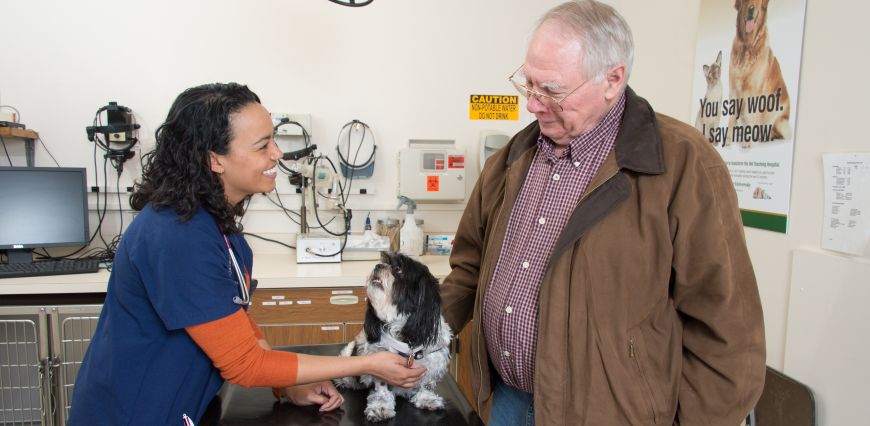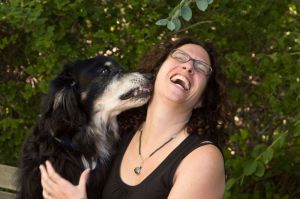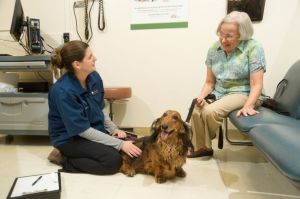
Bedside manner? Check!
Veterinary students and practicing professionals from across the country learn essential communication skills through a 30-year-old program that has grown to help define veterinary teaching and practice at Colorado State University.
“In the past, veterinary schools, like medical schools, focused on teaching students excellent technical skills while ignoring the communication component, which was considered a ‘soft’ skill,” said Dr. Jane Shaw, director of the CSU veterinary communication program. “We now see that communication is a core clinical skill, essential to clinical competence, alongside physical examination, medical knowledge and problem-solving.”
Called Veterinary Communication for Professional Excellence, the program recently reorganized for greater visibility and impact after operating for many years as part of CSU’s equally respected Argus Institute.
The change allows the two programs to more clearly define their roles in teaching and clinical service: The Argus Institute at the CSU Veterinary Teaching Hospital provides counseling services for clients, particularly those facing difficult decisions with their pets; Veterinary Communication for Professional Excellence designs and delivers communication curriculum to practicing professionals and to students in the CSU Doctor of Veterinary Medicine Program.
Communication: a key to success
Proof of the communication program’s impact comes from students.
“Communication can be the difference between succeeding and failing as a veterinarian,” said Lisel Ruterbories, a fourth-year veterinary student, who has learned skills throughout her years in vet school.

“I’ve learned to think about other perspectives and consider where other people are coming from,” Ruterbories said of the CSU Veterinary Communication program. “This type of education is applicable in any setting.”
Yet the veterinary clinical setting is the main focus for Shaw, fellow faculty member Dr. Beatrice Meyer-Parsons and their colleagues.
Here, strong communication skills with clients and colleagues allow a veterinarian to fully understand a patient’s medical needs – and to fulfill those needs with both technical skills and compassion. At its core, good communication helps form a productive partnership between the veterinarian, colleagues and client; this promotes pet health, the human-animal bond and professional veterinary relationships.
Put another way, the goal of Veterinary Communication for Professional Excellence is “enhancing the lives of people and animals one conversation at a time.”
Helping students and beyond
As CSU Veterinary Communication grows into a standalone program, it is increasingly emphasizing professional development for practitioners.
Shaw and her colleagues teach communication skills as part of continuing education courses offered through the Veterinary Management Institute. The institute is part of the American Animal Hospital Association; it recently moved to CSU from its longtime home base at Purdue University in order to gain from alliance with CSU’s business and veterinary programs.
CSU Veterinary Communication also teams with animal-health company Zoetis to deliver a continuing education course called the Frank™ Workshop. Like other offerings, the workshop is based on research in medical communication and aims to promote shared decision-making in veterinary medicine, leading to improved outcomes for pet patients and to increased satisfaction for pet owners and veterinarians.

The CSU program often delivers training in a novel way: through role playing involving students and actors who portray pet-owning clients. The sessions are conducted in a true-to-life exam room; they are videotaped for analysis, and fellow students watch the interplay from an adjoining observation room with a one-way mirror and audio equipment.
In these scenarios, actors are prepped to raise realistic pet-care concerns that often are sensitive, including ethical and financial dilemmas. Euthanasia, language and cultural differences, complex procedures, clinical mistakes, ability to pay for veterinary services – a full range of tough topics arises in the role playing, challenging students to hone communication skills needed to work in the best interest of both animal patients and owners.
Students learn to use appropriate body language, to build client trust, to avoid medical jargon and to calmly respond to highly emotional animal owners.
“Our job is to keep our patient’s best interest in mind,” Teegan Wheaton, a fourth-year vet student, said. “But we need to make sure clients understand why and how we are going to do that. Because if the client isn’t fully on board, are we really doing our job effectively?”
Students work with faculty members and other aspiring veterinarians to learn and practice these essential skills.
“I’ve learned more about the value of confidence,” Wheaton said of his clinical communication training. “Once you are confident, your ability to align your goals with your client’s goals becomes immensely easier.”
Writer Rachel Griess contributed to this report.